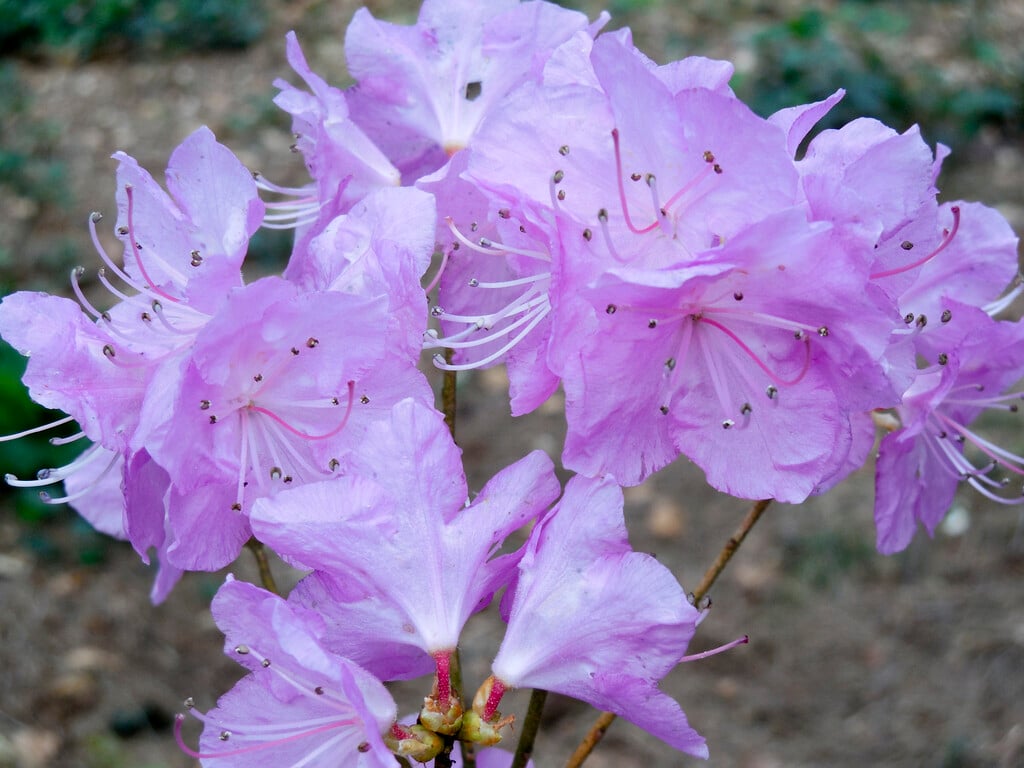Rhododendron mucronulatum
Korean rhododendron
A deciduous shrub, to about 2m high, with an upright habit and lance-shaped, dark green leaves with scaly undersides. Solitary, open funnel-shaped, lilac pink or sometimes white flowers are produced before the leaves in late winter and early spring
Size
Ultimate height
1.5–2.5 metresTime to ultimate height
10–20 yearsUltimate spread
1.5–2.5 metresGrowing conditions
Moisture
Moist but well–drainedpH
AcidColour & scent
| Stem | Flower | Foliage | Fruit | |
| Spring | White Pink Purple | Green | ||
|---|---|---|---|---|
| Summer | Green | |||
| Autumn | Green Yellow | |||
| Winter | White Pink Purple |
Position
- Full sun
- Partial shade
Aspect
South–facing or West–facing
Exposure
Sheltered Hardiness
H6Botanical details
- Family
- Ericaceae
- Native to GB / Ireland
- No
- Foliage
- Deciduous
- Habit
- Bushy
- Potentially harmful
- Harmful if eaten. Wear gloves and other protective equipment when handling. Pets (dogs, cats, rabbits, tortoises) Harmful if eaten - for further information and contact numbers regarding pets, see the HTA guide to potentially harmful plants
- Genus
Rhododendron can be evergreen or deciduous shrubs or trees, with simple leaves, sometimes with a dense colourful indumentum of hairs on the lower side, and funnel-shaped, bell-shaped or tubular flowers that may be solitary or in short racemes
- Name status
Correct
- Plant range
- E & N Asia
How to grow
Cultivation
Grow in moist but well-drained, humus rich, acidic soil, in sun or light shade. Choose a site away from frost pockets and sheltered from strong winds. Mulch annually, ideally with leaf mould. See rhododendron cultivation for more detailed advice
Propagation
Propagate by seed or by semi-ripe cuttings in late summer
Suggested planting locations and garden types
- City and courtyard gardens
- Cottage and informal garden
- Low Maintenance
- Flower borders and beds
Pruning
Prune lightly after flowering, see pruning group 1
Pests
May be susceptible to vine weevil, rhododendron and azalea whitefly, rhododendron leafhopper, Pieris lacebug, scale insects, caterpillars and aphids
Diseases
May be susceptible to powdery mildews, honey fungus, silver leaf and Phytophthora, as well as more specific Rhododendron diseases
Get involved
The Royal Horticultural Society is the UK’s leading gardening charity. We aim to enrich everyone’s life through plants, and make the UK a greener and more beautiful place.
